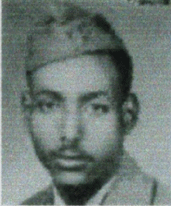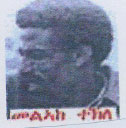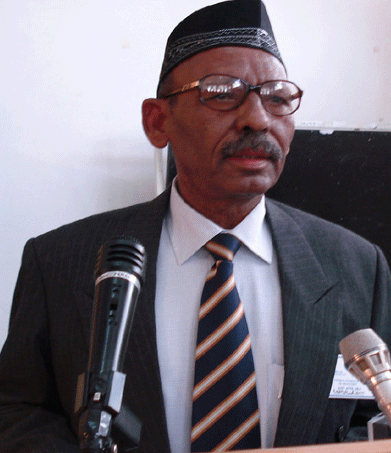ህ ግንባርን ጀብሃን፣ ብዘይካ ናይ ስልጣን ቁርቊስ ናይ ስነ ሓሳብ ፍልልይ ኣይነበረንን። ብሰንኪ ዘይሓላፍነታውያን ከዳዓት መሪሕነት ናይ ክልቲኡ ውድባት ክንደይ ንጹሕ ተጋደላይ ጸኒቱ።
ዶ/ር ኢዮብ ገ/ልኡል
The consequence of the 1970s and 1980s civil War, and accusations against leaders
Issayas explained
why the EPLF split from the ELF in the following words:
What people were doing before 1970 was to democratise the nature of the
ELF organisation from within, bring new ideas, and criticise their practices.
Unfortunately the ELF leadership resorted to physical liquidation of all
people who were coming with new ideas. This physical liquidation within
the ELF intensified the opposition. Finally there was no other choice
except to break away from this organisation and found a new organisation
which could meet the demands and aspiration of the people (p.130) Firebrace,
James ( 1984)
However, this is untrue. As mention earlier, the EPLF
was founded in power competition by the EPLF leaders ( Sabba and Issayas)
with the ELF leaders ( Idris Mohamed Adem and Abdella Idris). After the
formation of the EPLF groups (1 and 2) in the early 1970, the ELF leaders
instead of solving their differences in dialogue with the EPLF leaders,
the ELF leaders
who were elected at the First National Congress passed
a resolution to take military action against the EPLF similar to the
decision passed by the ELF Supreme Council against the Haraka in 1965.


During the civil war(1972-1974) more than a thousand lives lost because of power rivalry between the ELF and EPLF leaders. According to the Human Rights Watch (1991).
The two years of internecine strife between the two movements, which caused an estimated 3,000 casualties among the fighters - more deaths among the combatants than the entire thirteen years of government military actions to date. Purges within the two fronts also saw a number of people murdered.
A battle between the two fronts at Wolki in October 1974 left 600 fighters dead, and caused a spontaneous demonstration by the citizens of Asmara, who marched to the battlefield and demanded that the fronts settle their differences by negotiation ( Human Rights Watch 1991, 42). Markakis ( 1987: 138)also states that in October 1974, a newly arrived ELF-PLF unit stationed in the village of Zager, 18 km from Asmara, clashed with an ELF unit from the nearby village of Woki. A murderous battle ensued lasting several days, with heavy casualties on both side.

Abdalla
Idris Mohammed, ELFsecond vice president
Herui Tedla Bairu, ELF first vice president
Issayas, ELF-PLF (Ala group) leader
Idris Mohamed Adem, ELF President
Osman.S.Sabbe, EPLF Foreign Mission
Some victims of the civil war


Mahmoud Ibrahim Muhammad Saeed (Chekini):According to the ELF " he was killed (martyred) during the first Eritrean civil war. However, according to a reliable source Mahmoud ibrahim -chekini was murdered in the Sahel.
Tuku'e Yehadego According to the EPLF Tuku was killed in an ELF ambush in 1971 while bringing supplies from Port-Sudan to ELF-PLF fighters in Sahel, this was based on the EPLF story. However, according to a reliable source Tuku'e did not die in the civil war but there was a story that he mysteriously disappeared while he was with Girmai Mehari
The agreement which reached between the two fronts’ leaders was not a genuine unity agreement but was a tactical agreement similar to what happened among the opposition leaders from 1999 to present. As a result of this tacticl unity agreement a long power rivalry between the EPLF leader ( Issayas ) and the ELF leader ( Abdella Idris) the EPLF leaders took military action against the ELF in 1981.
The military action which was taken by the EPLF led to civil war that caused the deaths of many fighters on both sides. This was the ELF Supreme Council’s legacy of military action against Haraka in 1965. Mengesteab (2005:55) adds that Isaias and his group restored to the old ELF argument that Eritrea could not support more than one liberation front.



The spilt of EDA in 2007 was also happened because of the rival leaders of the ELF.RC and ELF. At the EDA Conference which was held in Addis Abeba, 2008 Hussen Kelifay also said that his organization was not ready to accept the candidature of ELF-RC for the Executive Office.

• In 1986 the ELF-RC was also attacked by the EPLF
• In 1988 the EPLF attacked the ELF-PLF UO and unknown number of fighters of ELF-PLF UO were killed includes its military commander Tesfay Mehere
The opposition leaders' unwillingness to consolidate the Eritrean people's struggle against this autocratic government has a history going back to the 1970s when they set back the victory of the liberation struggle in 1978 just 30 years ago. Regarding this Wolde Giorgis(1989: 93) wrote that the ELF and EPLF had the power to take Asmara, but at the last minute their mutual hatred proved stronger than their hatred of the Ethiopian army. He adds that, they lost their opportunity because they could not come to an agreement.
If there were genuine leadership inside the opposition groups in 2001, this autocratic regime would not have remained in power until now. However, the opposition groups leaders have contributed greatly to prolong this dictatorship.
To conclude it is not the intention of
this paper to detail the problems of the opposition leaders, but this
is just to highlight that the mistakes of the former revolutionary leaders
and their collaborators are being repeated by the people who lead the
opposition groups.
Contact: rkidane@talk21.com